Do you want to make your 3D prints more visually striking? Whether you’re creating a stunning 3D printed dragon or 3D printing car parts, multicolor printing is one of the best ways to elevate your models.
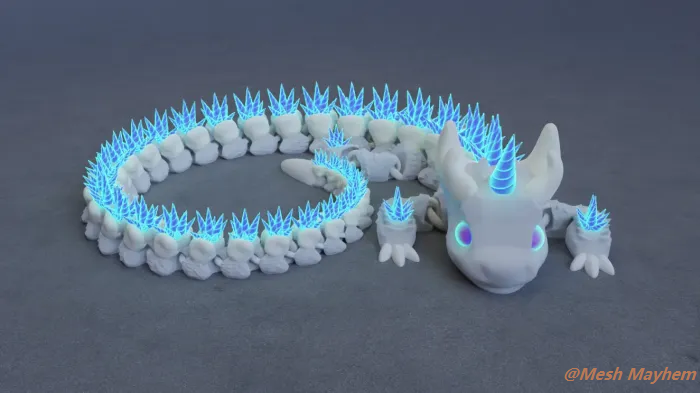
multicolor 3D printing allows you to incorporate multiple colors into one design, using techniques and methods like a multicolor filament, manually pausing, and printing individual pieces in your desired color. 3D printing is a great option for adding branded elements to your designs to give an aesthetic look to art models, toy designs, functional parts, and prototypes.
You don’t have to upgrade your current 3D printer to start experimenting with color. Even single-extruder printers can achieve multicolor results with the right methods. We’re sharing our tips on the best methods for multicolor 3D printing for novice beginners and expert hobbyists alike.
What Is multicolor 3D Printing?
3D printing allows you to use multiple colors when creating a single print. It’s different from multi-material printing, which allows you to combine different materials within a single print to enhance your design with different mechanical properties and functions.
There are a wide variety of 3D printers and solutions available on the market, ranging from dual-extruder systems to advanced multi-material units, all of which have produced increasingly vibrant and complex multicolor prints. These solutions are designed to be compatible with different printer models and filament types, making it easier to achieve the desired results.
3D printing with color is becoming one of the most popular trends in the niche, giving you more creative freedom and the ability to enhance the aesthetic appearance of your design. While it requires a slightly more complicated setup with longer printing times, multiple-color 3D printing is something even beginners can experiment with. Attention to detail and higher precision are crucial for getting the best results, especially for 16 color 3D prints using technology like the K2 Plus Combo.
4 Common Methods of multicolor 3D Printing
We’re sharing four methods of 3D printing with color to help you find the best option that suits your workflow. Whether you’re a beginner or an expert looking to elevate your designs, there’s a multicolor 3D printing method for everyone.
Pause and Change Filament (For Single-Extruder Printers)
If you have a single-extruder printer, the easiest way to incorporate multiple-color 3D printing into your workflow is by pausing your printing mid-way to manually swap the filament. Numerous products, including the K1C, employ this method to enable multi color 3D printing
This method of 3D printing in multiple colors requires a printer with a pause function and slicing software, such as Creality Print. Simply set pause points in the slicer and change the filament during the printing process accordingly.
Pausing and changing the filament is one of the easiest ways of 3D printing with color and requires no extra hardware. However, the manual intervention might not suit every user’s workflow and there are limited color changes that you can make.
Print Separate Parts and Assemble (Works with Any Printer)
A multicolor 3D printing method that works for any printer is printing and assembling separate parts. Split your model into colored sections and print them separately before assembling.
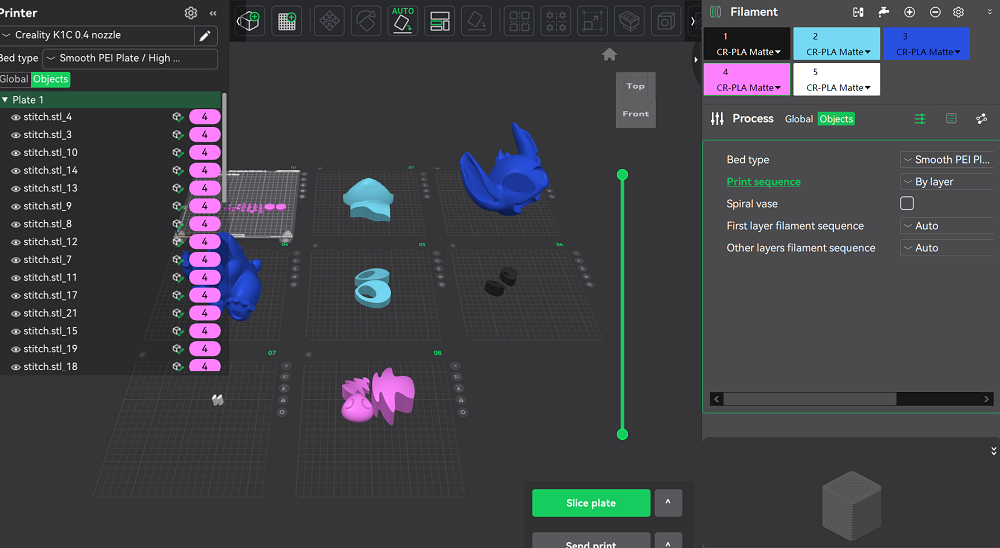
This method is best suited for modular toys, badges, logos, and character models with design elements that can be easily separated by color. Glue bonding and snap-fit designs are the easiest assembly methods for these models, and it’s important to ensure your dimensions fit precisely for a seamless look once assembled.
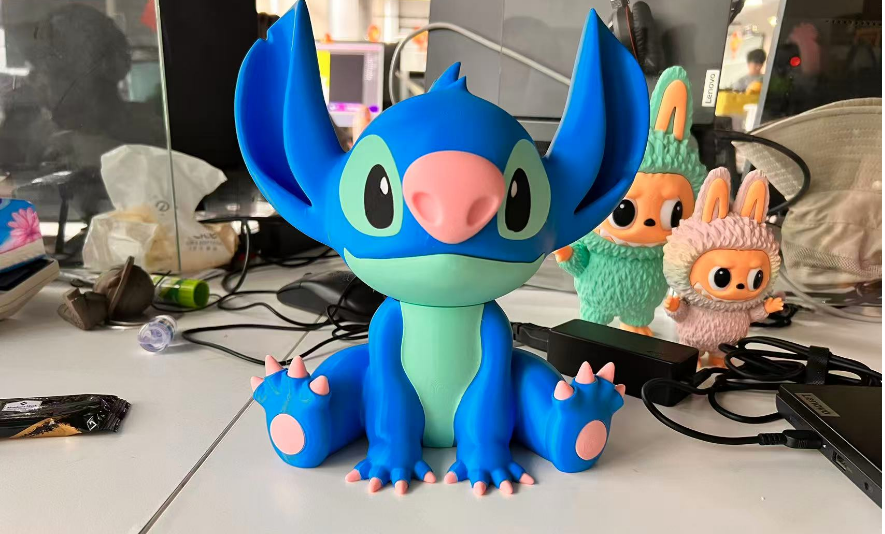
Use multicolor Filament (Like Gradient or Rainbow Filament)
A 3D printer multicolor filament contains multiple colors that shift naturally during the printing process to create your desired look. You can adjust your model size or layer height to determine where the color appears. This multicolor 3D printing method is easy to use as it doesn’t require filament swapping. However, you’ll have less control over color placement compared to other methods, so this option is best suited for models requiring only decorative colors, like sculptures and vases.
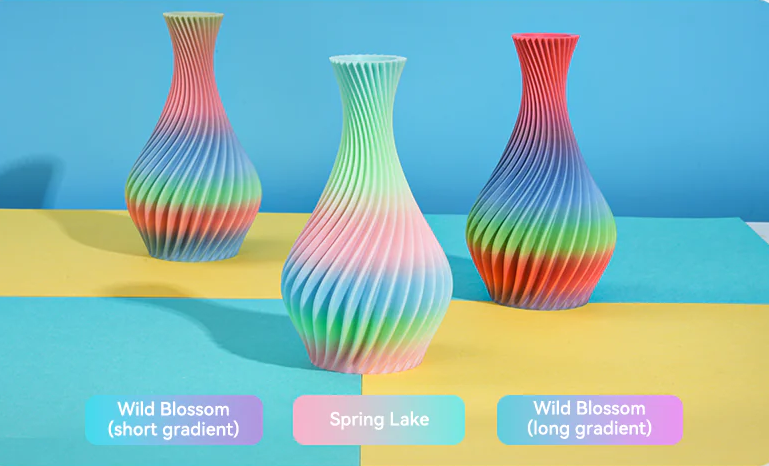
Use Multi-Extruder or Color Mixing Printers
3d Printers like the K2 Plus Combo switch or blend filaments automatically for multicolor output. Multi-color 3D printers simplify your workflow by making it easy to create 16 color 3D prints without having to manually change settings.
Although it requires a more advanced setup, these printers provide professional-quality results and are ideal for businesses or more advanced hobbyists. You can customize and color-split models using programs like TinkerCAD or Autodesk Fusion 360 to curate your printing experience.
5 Tips for How to 3D Print in Multiple Colors
Get the most from your 3D multicolor printing with these beginner-friendly tips:
-
Start with small test models before experimenting with full-size multicolor prints.
-
Set up a purge tower or wipe zone to minimize color contamination.
-
Use high-contrast colors for the most impactful visual effects.
-
Maintain consistent layer height when layering colors to avoid misalignment.
-
Use a slicer plugin, like Creality Print, to streamline your choice of multicolor settings.
Common Issues with Multiple Color 3D Printing and How to Avoid Them
When you’re searching for multicolor 3D print models on websites like Thingiverse, Printables, and MyMiniFactory, it’s worth considering some of the common issues with multiple-color 3D printing and how to avoid them.
-
Color bleeding typically happens due to unpurged old filament and can be avoided with proper nozzle maintenance, including adjusting your purge settings.
-
Model shifting during manual filament swaps can be reduced with proper calibration and alignment.
-
You can avoid misaligned parts when assembling separate prints by using clamps or jigs. It’s also worth doing a dry fit to spot any potential gaps or issues.
-
Inaccurate color transitions with rainbow filaments can be avoided by using shorter color change intervals and ensuring a direct filament path.
FAQ about multicolor 3D Printing
We’re answering four of the most common frequently asked questions about 3D printing with color below. Got a question that’s not on this list? Contact our team for more articles and in-depth guides on how to get the most from your Creality 3D printer.
Q1: Can I do multicolor 3D printing with a single extruder?
You can 3D print multiple colors using a single extruder by manually pausing the printing process and changing the filament. Alternatively, you can use a rainbow filament to streamline your workflow and avoid manually pausing printing.
Q2: What’s the easiest method for multicolor printing?
The filament swap method, pausing printing to change your filament, is the easiest method for 3D printing in multiple colors and is ideal for beginners and hobbyists.
Q3: Which printers support automatic multi color printing?
The best multicolor 3D printer for automatic multicolor printing is the Creality K2 Plus Combo. If automatic printing is a priority, focus your search on printers with a multi-extruder system to support your preferred workflow.
Q4: What filament works best for multicolor prints?
There are two main options for how to 3D print in multiple colors. A regular PLA is ideal for part-to-part color printing, or you can use a rainbow filament to create gradient effects.
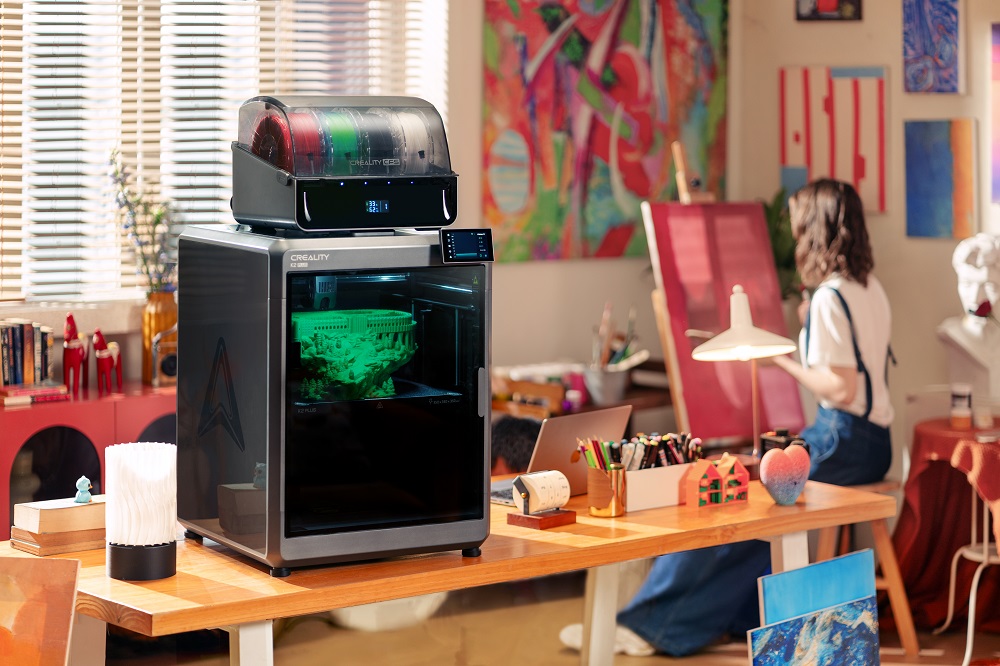
Experiment with 3D Printing with Color with Creality
There are methods for 3D printing with color to suit every type of user and model design. You don’t need to buy an expensive machine to get results. Follow your creativity and try simple color swap techniques and build up gradually before investing in a purpose-built multicolor 3D printer, like the Creality K2 Plus Combo. Go ahead and print your first colorful model today!
Read our expert guide : Creality K2 Plus Combo: The All-in-One Solution for Versatile 3D Printing
